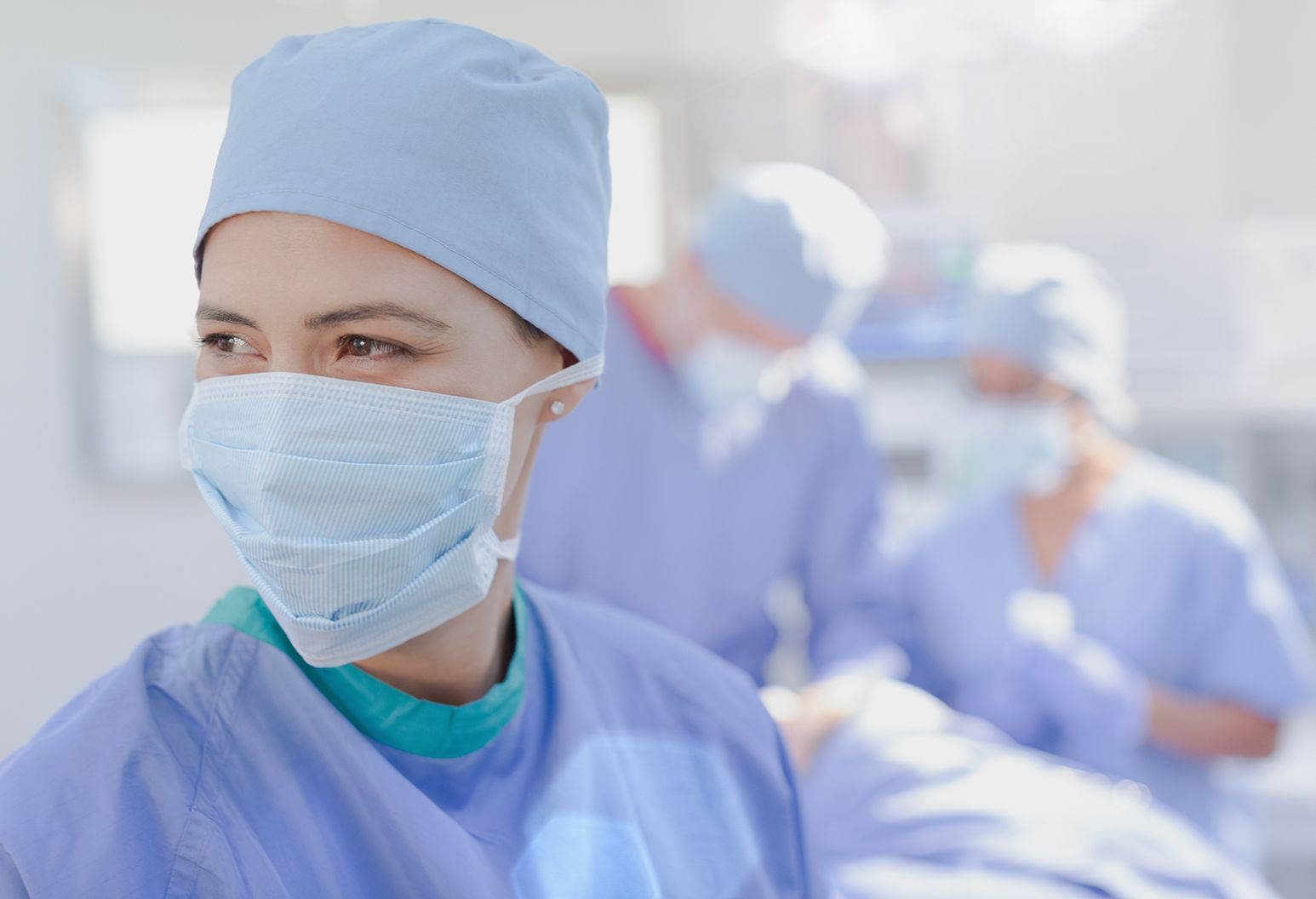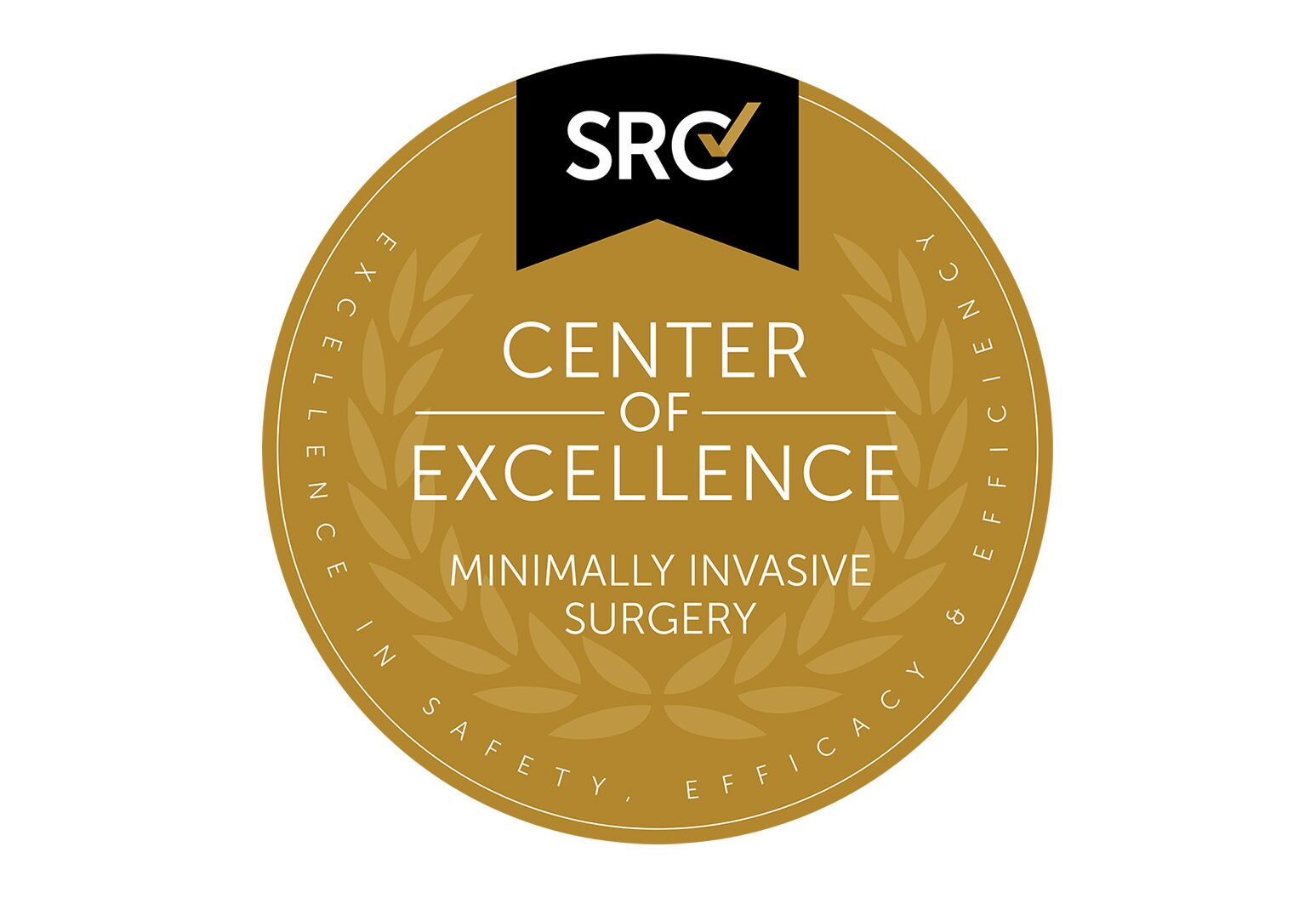Minimally invasive surgery

About
By using the most cutting-edge, minimally invasive surgical techniques available, we’re making life better for our patients. You’ll experience:
- Less pain after surgery
- Faster recovery
- Smaller scars
- Reduced risk of wound infection
With minimally invasive surgery (also called laparoscopic or keyhole surgery), our surgeons perform procedures using quarter-inch to half-inch incisions. The small openings allow for the insertion of tiny cameras, scopes and instruments. Keeping it small means less injury to the body. And those cameras give the surgeon a clearer view than a traditional open surgery.
Minimally invasive surgery is not right for all conditions. We perform it regularly on the following:

Staten Island University Hospital is accredited by SRC as a Center of Excellence in Minimally Invasive Surgery (COEMIS), setting a standard of excellence in patient care and safety.
Adrenal glands
The adrenal glands—two small glands located at the back of the abdomen above the kidneys—are responsible for producing special hormones we need to live.
- Cortisol, which helps govern how the body uses proteins, fats, and carbohydrates
- Aldosterone, which regulates the levels of sodium and potassium in the body, affecting blood volume and blood pressure
- Androgenic steroids, which are a part of the system the body uses to supply male and female hormones
- Adrenaline (Epinephrine), which controls how the body responds to stressful situations, impacting heart rate and other bodily functions
- Noradrenaline (Norepinephrine), which works to regulate blood pressure
Certain diseases throw the balance of these hormones off and can cause other problems in the body like:
- Heart disease
- Stroke
- Kidney failure
- Respiratory distress
- Nerve damage in the eye
Sometimes these imbalances are caused by tumors in the adrenal glands that may require surgery. Pheochromocytoma and aldosteronoma are examples.
Pheochromocytoma is a rare (usually benign) tumor in the center of the adrenal gland that over-secretes adrenaline intermittently, causing episodes of high blood pressure. High blood pressure can lead to cardiovascular and other problems.
Aldosteronoma is a tumor (also usually noncancerous) that over-secretes the hormone that tells our kidneys to hold onto sodium (salt) and therefore water, causing constant high blood pressure.
Typically, the largest incision we might make in this procedure is just 2 inches, while the conventional operation to remove these tumors involves a very large 10-12 inch incision. With our approach, patients experience much less pain and are often able to leave the hospital within two days.
Colon (large intestine)
There are both benign (noncancerous) and malignant (cancerous) diseases of the colon that may require surgery.
Some of the colon conditions we regularly treat with laparoscopic, robotic, and other minimally invasive types of surgery are:
- Colon cancer
- Crohn's disease
- Diverticulosis
- Fecal incontinence
- Polyps
- Ulcerative colitis
Learn more about our Division of Colon & Rectal Surgery.
Esophagus
There are several conditions of the esophagus that may require surgery. Our state-of-the-art gastrointestinal laboratory—the only one on Staten Island—is equipped to help our team of specialists determine if surgery is the right option for you.
In addition to cancerous diseases of the esophagus, common benign diseases we treat include:
Gastroesophageal reflux disease (GERD)
When stomach acid, and occasionally stomach content, flows up the esophagus frequently, it can cause irritation to the esophagus lining. This condition, called GERD or reflux, is often treated with acid blocking medications like omeprazole, Nexium, Protonix, and Prevacid. However, there are times when medication is not enough, and surgery is needed to strengthen the muscle that prevents acid from leaving the stomach.
Achalasia
The sphincter muscle at the bottom of the esophagus normally relaxes to allow food to pass into the stomach. In achalasia, the muscle does not relax properly. This causes food to sit in the bottom of the esophagus for a long time causing bad breath, choking, vomiting and eventual enlargement of the esophagus. The treatment for this is an operation that splits the muscle to allow passage of food more normally.
Hiatal (paraesophageal) hernia
The opening in the diaphragm (breathing muscle) through which the esophagus passes can sometimes get larger, allowing part of the stomach, and sometimes other organs, to get pushed up into the chest. This hiatal hernia can cause shortness of breath, severe acid reflux that does not respond to acid blocking medications and a sensation of food sticking after swallowing. In rare cases, this can cause a twisting of the stomach which leads to complete blockage. Sometimes surgery is necessary to relieve this condition.
Planning your treatment
In diagnosing GERD and achalasia, we use essential testing like manometry (a special probe that measures the effectiveness of the muscle contractions) and 24-hour pH monitoring, which measures the acid content of the stomach and esophagus. Our surgeons, who specialize in the treatment of diseases of the esophagus, will use this information and more to determine your best course of treatment.
If surgery is involved in your plan of care, we use the latest minimally invasive techniques to reduce risk of infection and minimize your recovery time. Most people go home just two days after surgery.
Hernia
What is a hernia?
A hernia occurs when an organ or section of fat protrudes through an opening in the wall that normally holds it back. Some hernias go back in by themselves and others can be pushed back into place. These are called reducible hernias. Though others cannot be repaired in this way and are called irreducible. These are much less common, but can be life-threatening without proper treatment. All hernias can cause discomfort and prevent normal activities.
Different types of hernias
Inguinal (groin) hernia
The most common type of hernia is the inguinal hernia, which appears in the groin. An example is when the intestine pushes through a weak spot in the abdominal muscle. Primary causes include obesity, pregnancy, heavy lifting and straining to pass stool.
Umbilical (belly button) hernia
We are all born with a tiny hole in the belly button, through which we were fed when we were growing in the womb. Umbilical hernia occurs when part of the intestine pushes through that opening. While this most often occurs in infants, it can also affect adults.
Incisional hernia
Incisional hernias happen most often after large conventional operations. If after healing, the area around the closed incision is not as strong as it once was, a hernia may develop.
Repairing a hernia
Not all hernias require surgical repair, but when they do, we use minimally invasive surgical techniques whenever possible. Frequently, laparoscopic surgery is performed. This results in less pain after surgery, quicker recovery time, less chance for infection and less scarring.
In most cases, the surgeon will make several small incisions through which a scope and instruments are inserted and the wall is repaired. Sometimes, a piece of plastic mesh is placed to reinforce the area to prevent recurrence. Patients who have this surgery usually go home the same day and are instructed to avoid heavy lifting for one month until the body has healed.
Small intestine
Disease of the small intestine—whether cancerous or noncancerous—sometimes requires surgery as part of overall treatment. Other times, conditions outside the small intestine will also require small intestine surgery as part of the treatment plan. In all cases, whenever possible, we use laparoscopic and noninvasive surgical procedures.
Some of the more common reasons for surgery of the small intestine include:
Feeding tube
Patients sometimes require the placement of a feeding tube in the beginning part of the small intestine to receive nutrition. Examples might be if the stomach cannot be used or if there is a high risk of choking when the stomach has been used in the past.
Intestinal blockage
Blockages in the small intestine must be treated, as they can cause the blocked part of the intestine to die. They can be caused by:
- Adhesions – fibrous scar tissue that builds up after conventional abdominal surgery, causing intermittent blockage of the intestines as they kink (much like a garden hose), resulting in nausea, vomiting, severe bloating and inability to eat or drink
- Crohn’s disease
- Diverticulitis
- Hernias
- Benign or cancerous tumors
Minimally invasive surgery to clear intestinal blockage involves less pain after surgery and decreases the amount of time it takes for the intestines to work again, compared to conventional surgery. Typically you can expect to go home in just two to three days.
Spleen
Removal of the spleen—called a splenectomy—is sometimes necessary to treat certain blood disorders, when other medical therapies have not been successful. These disorders include:
- Immune thrombocytopenic purpura (ITP) – an autoimmune disease where the body attacks a part of the blood called platelets
- Hereditary spherocytosis (HS) – a disorder of the shape of the red blood cells that people are born with
- Certain lymphomas and leukemias – blood-related cancers
Most patients will already be under the care of a hematologist (a doctor specializing in blood disorders) before being referred to one of our surgeons for splenectomy. These specialists will work together to ensure the best possible plan of care.
The spleen can be safely removed laparoscopically via four or five small incisions made on the abdomen. Then, the spleen is removed through a small incision just large enough to remove it, depending on the size. Typically, this incision is 3 inches or less, which is much smaller than the 10 or more inch incision used in conventional surgery. The smaller incisions result in less pain and quicker recovery, and also reduce the risk of infection and hernia. Patients typically can go home two days after surgery.
Stomach
There are a number of conditions that may require surgery of the stomach. Our surgeons at Staten Island University Hospital are prepared with state-of-the-art equipment and the latest minimally invasive techniques to determine the best course of treatment for you.
Advantages of laparoscopic (minimally invasive) stomach surgery, compared to conventional surgery, include faster recovery, less pain, less time spent in the hospital, decreased risk of infection of the incisions and a decreased risk of hernia formation.
Some common reasons for stomach surgery are:
Feeding tube placement
Patients may require the placement of a feeding tube because of illness and an inability to swallow safely. Typically, these tubes are placed via endoscopy by a gastroenterologist. However, sometimes endoscopy is not possible and the tube must be placed surgically. Feedings tubes may be temporary or permanent depending on the specific situation.
The tube is placed using a laparoscopic approach with only four small incisions, one of which is used for the tube itself. The tube is secured to the stomach using stitches, then that part of the stomach is secured to the abdominal wall.
Stomach tumors or gastrointestinal stromal tumors (GIST)
There are tumors of the stomach—both cancerous and noncancerous—which, depending on the size and type, can be removed using a minimally invasive approach. Once a thorough evaluation is performed to determine the size and extent of the tumor, it can safely be removed laparoscopically. Depending on the location of the tumor, this surgery may entail removal of a small part of the stomach. In some instances, a somewhat larger operation may be needed to reconnect the stomach to the small intestine. It is still possible to perform this laparoscopically with a few small incisions.
Bariatric surgery
Excess weight can cause serious health problems like diabetes, high blood pressure and sleep apnea. For some, bariatric surgery is an effective way to achieve weight loss. It works by limiting the stomach’s capacity. Different types of weight loss procedures accomplish this in different ways. One way is by restricting the amount of food the stomach can hold. Another is by reducing the absorption of food into the body. Some bariatric surgeries use both methods.
At our world-class Center for the Surgical Treatment of Obesity, we regularly perform the following minimally invasive procedures:
- Gastric bypass
- Sleeve gastrectomy
- Lap-band
